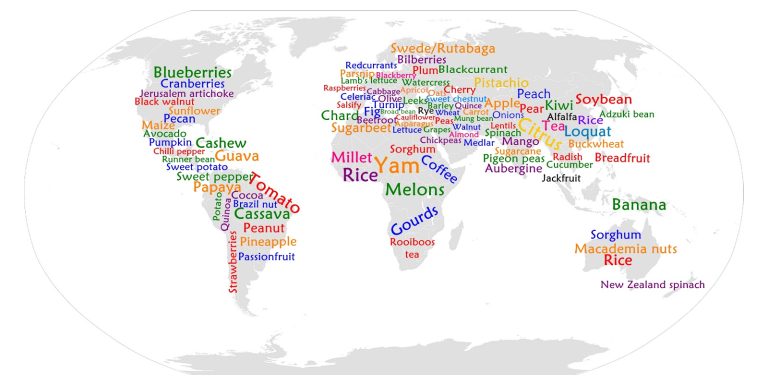By Becky Ellis

Need to attract a more diverse group of insects and pollinators? Here’s how to grow a pollinator garden.
Pollinators — the special group of animals that assist plants in reproduction by moving pollen from the male part of the plant to the female part of the plant, are in decline around the world. Non-insect pollinators, such as some birds and fruit-eating bats, are declining alarmingly. Many species of insect pollinators, including bees, butterflies, beetles, wasps, and flies, are also in decline (or in the case of managed bees, declining health) although the data is incomplete. Recent studies on insects as a group, point to serious declines.
However the news is not completely grim. There is a growing body of evidence that engaging in pollinator gardening can help to increase the diversity and abundance of insect pollinators in localized areas. You can help to boost the population of insects pollinators in your neighbourhood and region. I like to think of it as bee-centred gardening, since wild and managed bees are some of the best pollinators in the animal kingdom.
The basics of bee-centred gardening
- Plant a wide diversity of plants. Bees need a polyculture not the monoculture of endless fields of corn or lawns of grass. I am in favour of reverting as much lawn to gardens as possible. I use the sheet-mulch method to create a new garden bed and recommend seeding white clover into the lawn you can’t convert to garden. Try to mimic how plants grow in the wild. Often species grow in a patches together.

2. Plant flowers that bloom in all seasons (well, not winter in the Northern hemisphere). Spring and fall are the times in which bees are especially in need of good sources of nectar and pollen. Surprisingly there can also be nectar dearths in the summer. Try to make sure you have blooming flowers in spring, early summer, late summer, and fall.

3. Plant native plants. Native plants have co-evolved with wild bees, many (but not all) who are specialists,, preferring the nectar and pollen of specific groups of plants. Many native plants are perennials and, once established, can flourish almost on their own. Native plants have also been used for thousands of years by people and many are edible or medicinal. Buy the plants species not the cultivar. For example, you can buy Echinacea purpurea or you can buy a variety of cultivars of E. Purpurea that have been bred for specific characteristics (double blooms, different colours, etc). When you have a choice buy the species.
4. Protect trees. The first food for many species of bees in the spring is the pollen of trees. Many trees are crucial larval hosts for butterflies. Be very reluctant to ever cut down a tree and raise a stink when trees are cut down in your neighbourhood.
5. Create habitat for wild bees. Wild bees nest in pithy or hollow stems and the ground. Leave patches of bare ground and don’t cut the dead stems of perennials until mid-spring. You should do a lazy fall garden clean-up, leaving dead standing stems and lightly mulching garden beds with dried leaves. Bee hotels and nesting boxes are great but it’s even better to give them a habitat in which they can make their own nest.
6. Leave a source of water. All animals need water to live, insects included. Leave saucers with rocks throughout your garden and fill it daily with water. It will not attract mosquitoes because it is too shallow and the water evaporates quickly.

7. Do not use pesticides. ‘Pesticide’ is a catchall term that includes insecticides, herbicides, and fungicides. Completely stop using them and be careful before using organic insecticides. My best defence against “pests” is biodiversity, particularly wasps and toads. My best defence against weeds are my own two hands. Buy organic seeds and plants whenever possible.

8. Make peace with wasps and ‘weeds’. Many weeds are medicinal and edible. My favourite way to get rid of them is to eat them. Wasps are an extremely important group of insects that do a little pollinating but work to keep the populations of other insects in check. Social wasps like yellow jackets can be aggressive when you go near their nest and at certain times of the year (late August) as they prepare for winter. Be respectful of them. Solitary wasps, on the other hand, are very gentle and beautiful.

My favourite native plants for bees (this is specific to North-Eastern North America, especially Southern Ontario, Michigan, etc)
- Columbine, Aquilegia canadensis
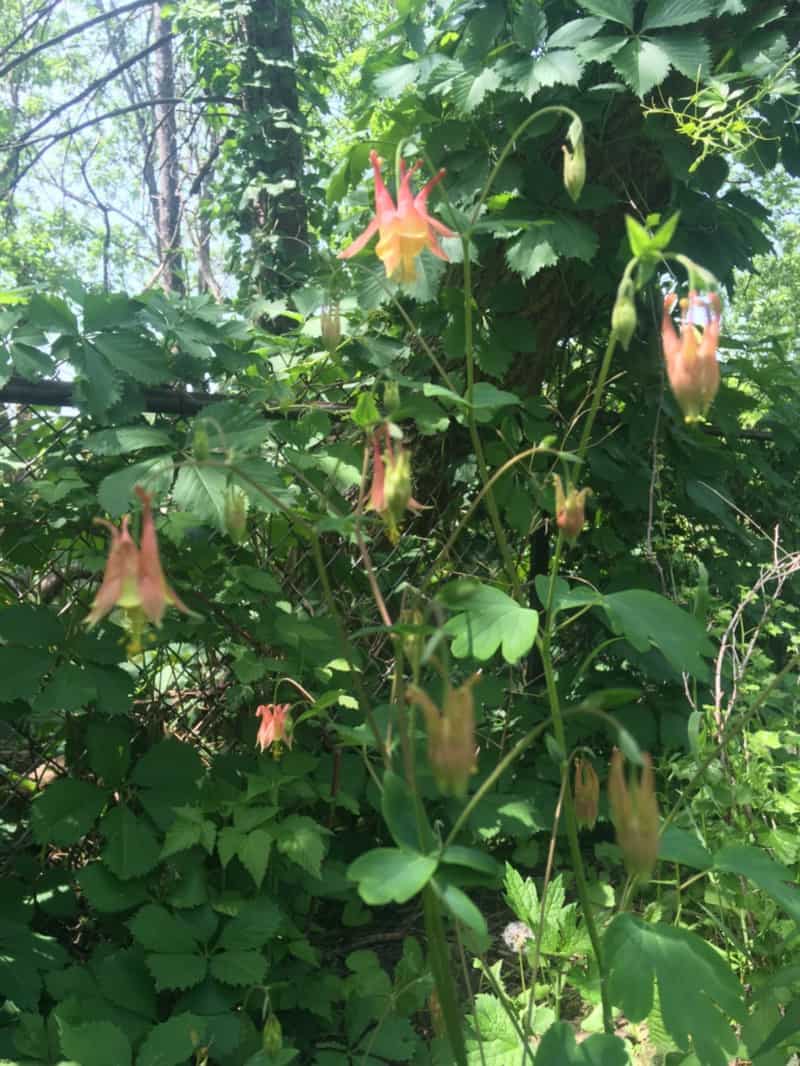
2. Wild Strawberry, Fragaria virginiana
3. Prairie Smoke, Geum triflorum
4. Joe Pye Weed, Eutrochium maculatum (and others)

5. Goldenrod, Solidago spp (this means multiple species within the genus). Please note: goldenrod is NOT responsible for hay fever. Wind-pollinated plants cause seasonal allergies, goldenrod is animal pollinated. A couple of species of goldenrod are opportunistic but many others are well-behaved. Please not: I still plant opportunist native plants, it is not a moral judgement on the plant, merely a description of their behaviour.
6. Milkweed, Asclepias spp. Common milkweed is opportunistic but other species such as butterfly milkweed are well-behaved.
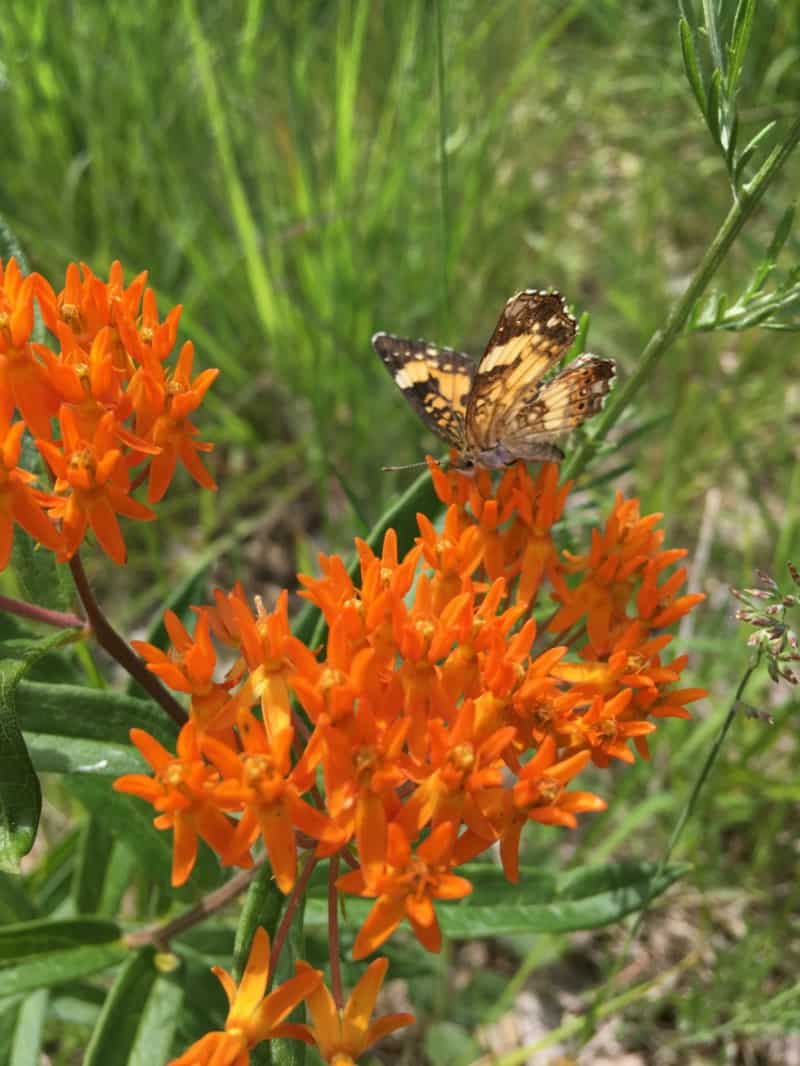
7. Elderberry, Sambucus canadensis. Delicious for bees and people and the stems make great nesting spots for solitary bees.
8. Raspberry, Rubus idaeus, see elderberry
9. Asters, Symphyotrichum spp.
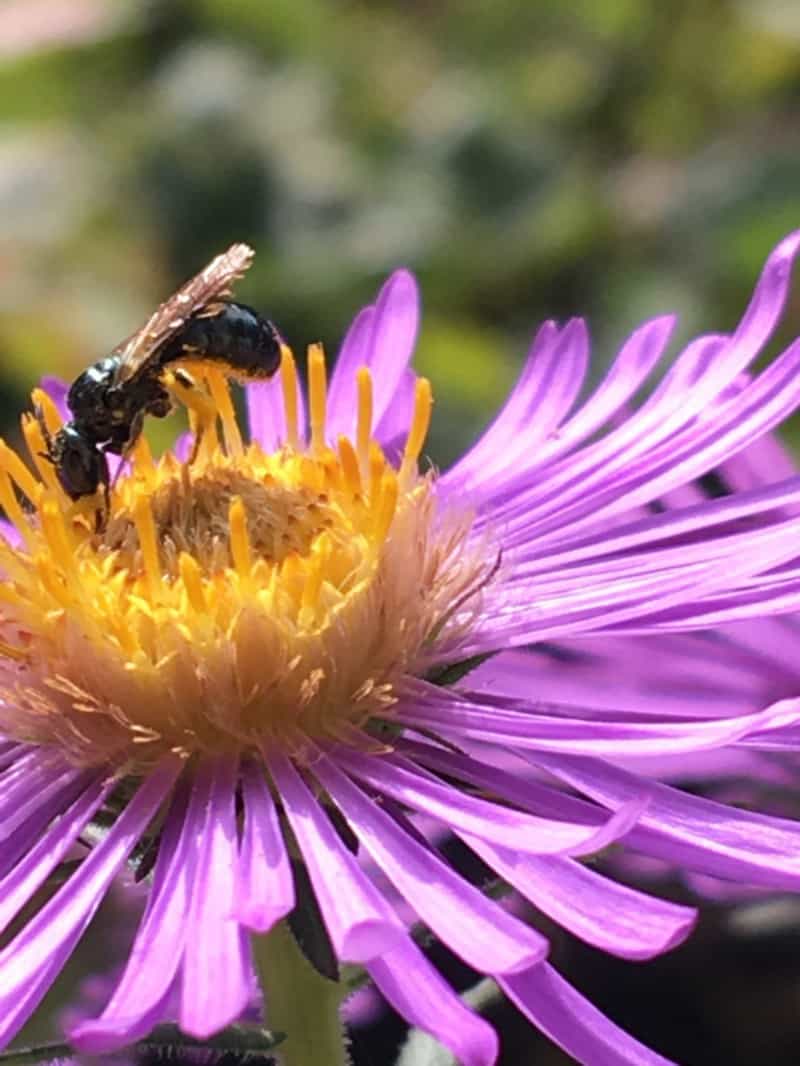
10. Rose, Rosa spp. There are multiple native rose species. I like smooth rose (Rosa blanda).
11. Hyssops, Agastache spp. Anise hyssop makes a lovely tea.
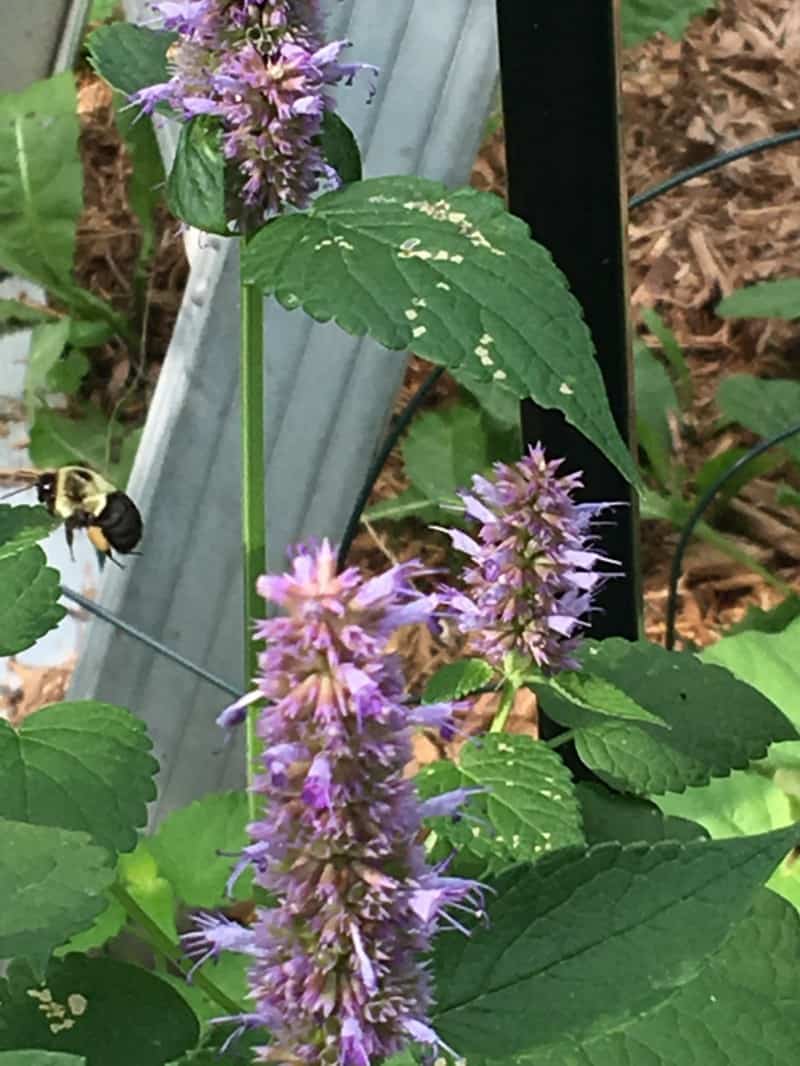
12. Coneflowers, Echinacea spp. Remember, with this group of flowers, buy the species not the cultivar. There are many different species of coneflower but don’t be fooled by the hybrids/cultivars in nurseries.
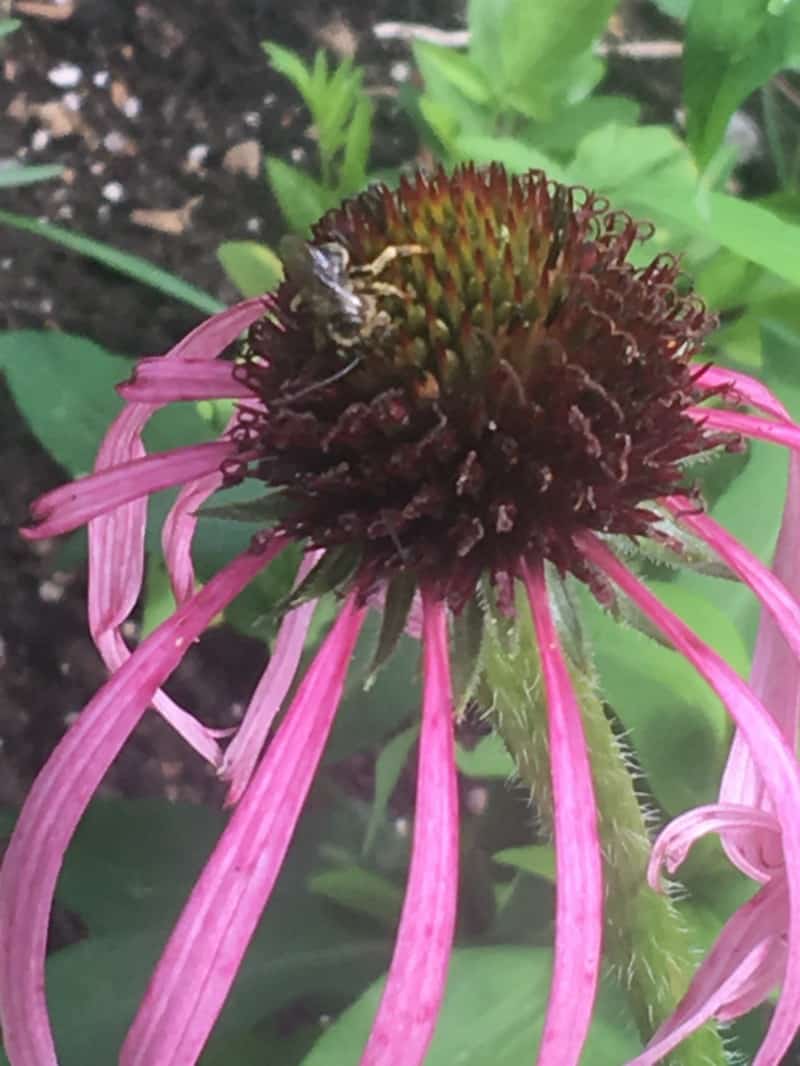
13. Sunflowers, and sunflower-like plants such as Jerusalem Artichoke (Helianthus tuberosus), Cup Plant (Silphium perfoliatum), False Sunflower (Heliopsis helianthoide), etc. Sunflowers have been heavily bred by people as a culinary food so it may be hard to find the native species (Helianthus Annuus). Planting a cultivar is just fine, in my opinion, but you may want to seek out similar native flowers that have the added bonus of being perennials. Jerusalem Artichoke is also edible as it is a delicious root vegetable. Many species of bees absolutely love these types of flower.
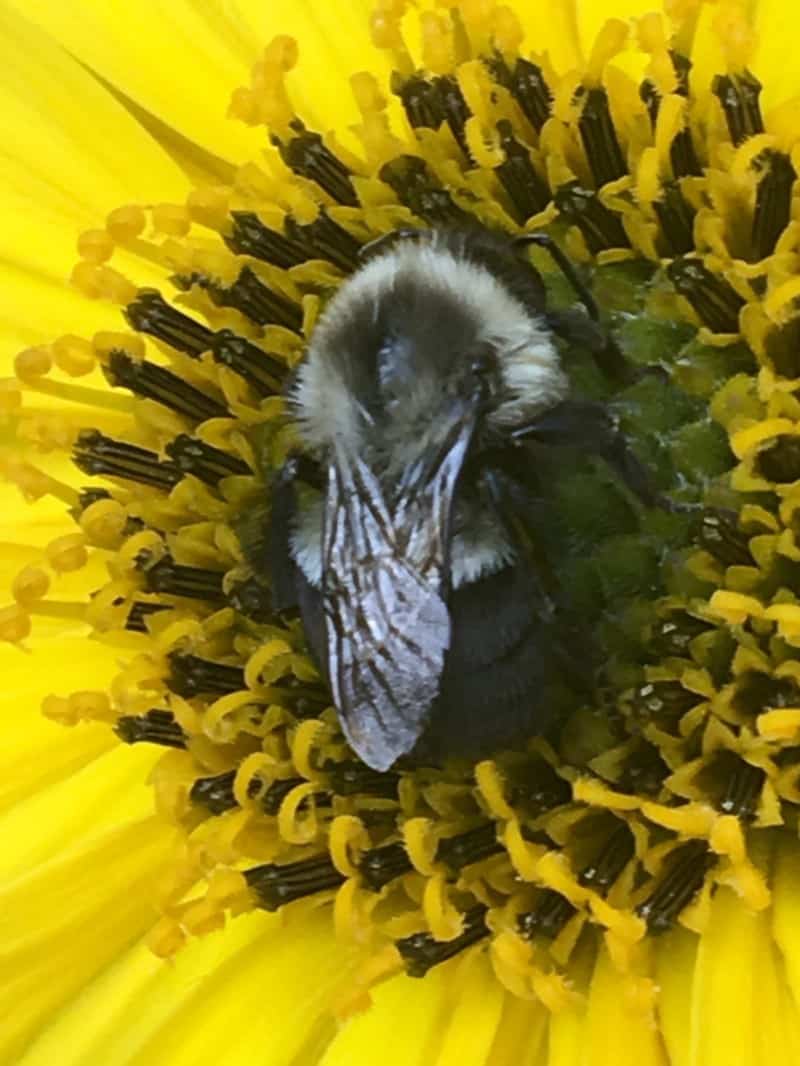
My favourite non-native plants for bees
These plants are ideal for planting in your vegetable garden to increase pollination and most have multiple functions.
- Catnip and/or cat mint. I am very confused about whether these are the same plant. I think they are different species of plants within the same genus. Regardless, bees love them, cats love them, and they make a calming tea for people. I regularly see native bees on my catnip.
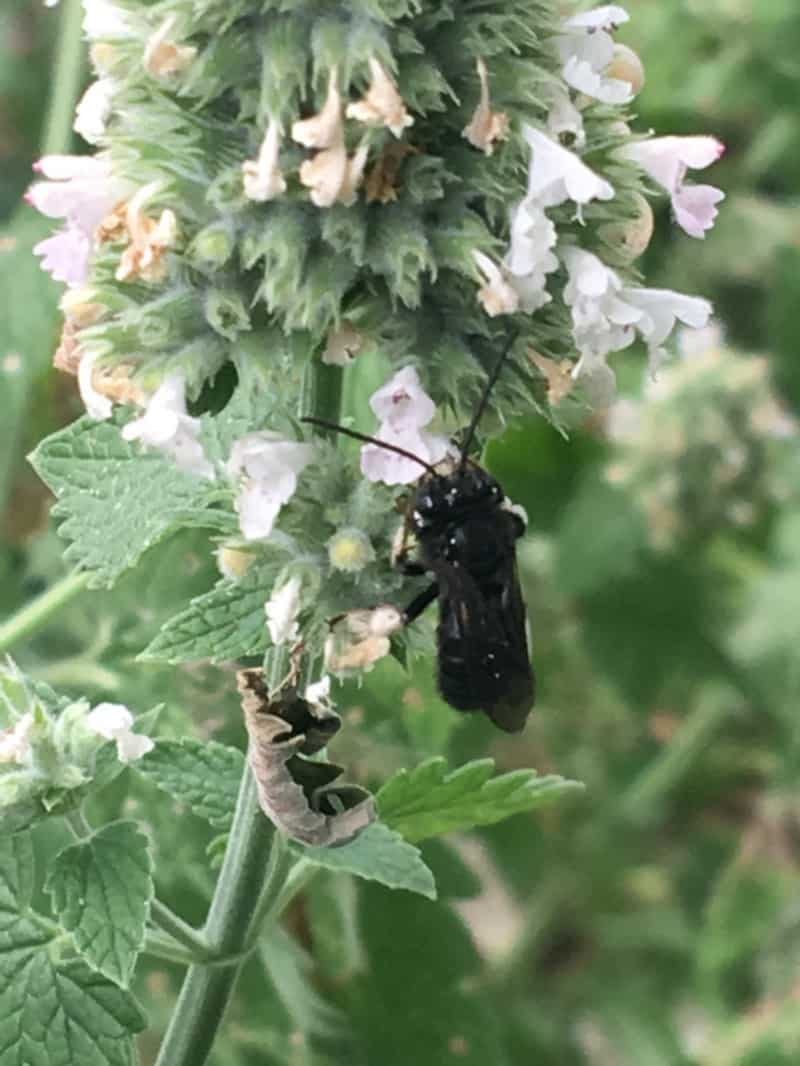
2. Borage. Borage is loved by bumble bees and the flowers are edible (they taste like cucumbers).

3. Mullein or Lambs’ Ear. Bees like the flowers but one species of bee, Anthidium manicatum, or the Wool Carder Bee likes to use the soft leaves for their nest. This bee, interestingly, is not native to North America but it has naturalized. Mullein has been used for centuries (maybe millennia) to treat bronchial infections.
4. Lovage. Lovage tastes like very strong celery and is loved by pollinators.
5. Valerian. Loved by bees, butterflies, and other insects. Has been used medicinally as a calming herb.
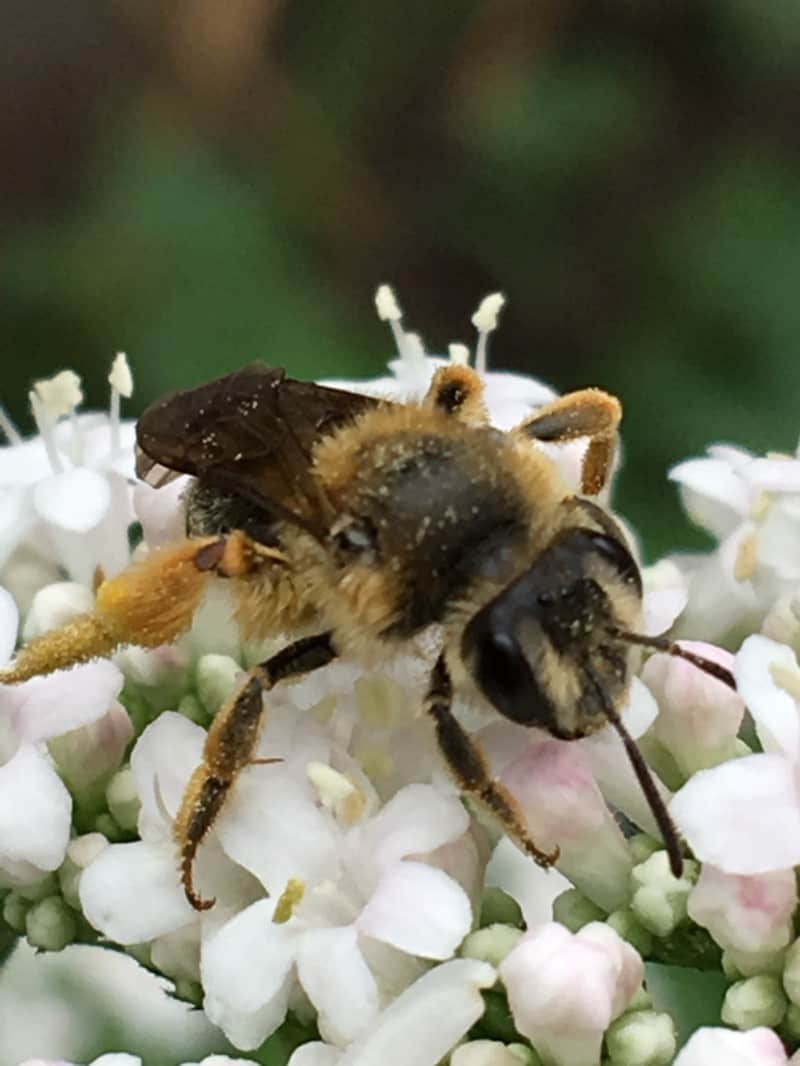
6. Sweet Cicely, Spring flower, loved by pollinators with a sweet anise taste in the leaves, flowers, and seeds.
So go forth and be an enemy of lawns and spread organic flowers where ever you go (I am only slightly joking). Leave out water for insects of all kinds and engage in lazy fall gardening so native bees and butterflies can find spots to overwinter. Support small-scale, organic farmers especially those that also treat their human workers with respect. The most important aspect of being a bee-centred gardener is to consider yourself in relationship with bees. I don’t mean this in some sort of deep spiritual sense (although that is good as well). We are embedded in an entangled relationship with bees. One of the biggest tricks of capitalism is that it hides the relationships that we are in with each other in every single aspect of our lives. These relationships include non-human animals. Bees work hard to pollinate our food and they co-habitat and co-create ‘our’ landscapes. If you are spraying pesticides and only have grass in your backyard, you are in a harmful relationship with bees. However, you can move towards a mutually beneficial relationship with bees and the amazing thing is that it is as easy as planting a patch of flowers and leaving out a saucer of water.
Happy gardening!
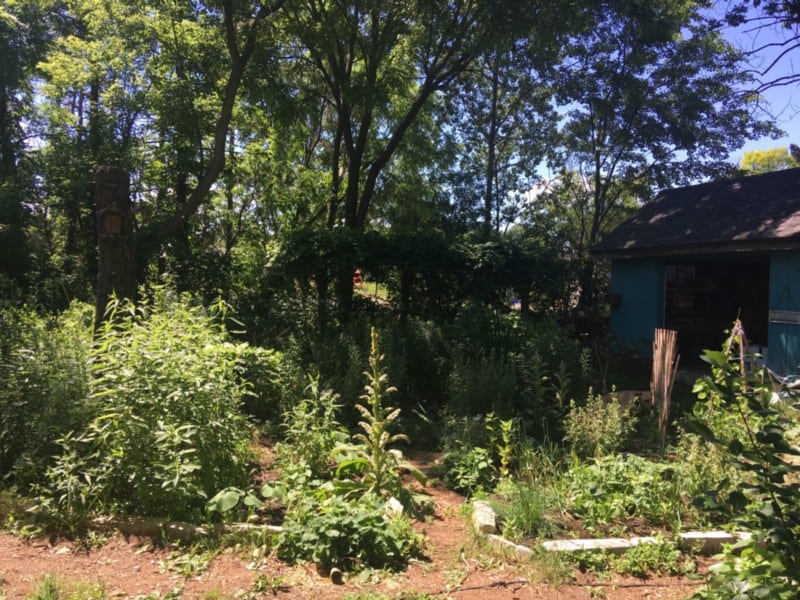
My garden, which is about to erupt in a riot of colour!
Originally published at permacultureforthepeople.org on June 30, 2018.

